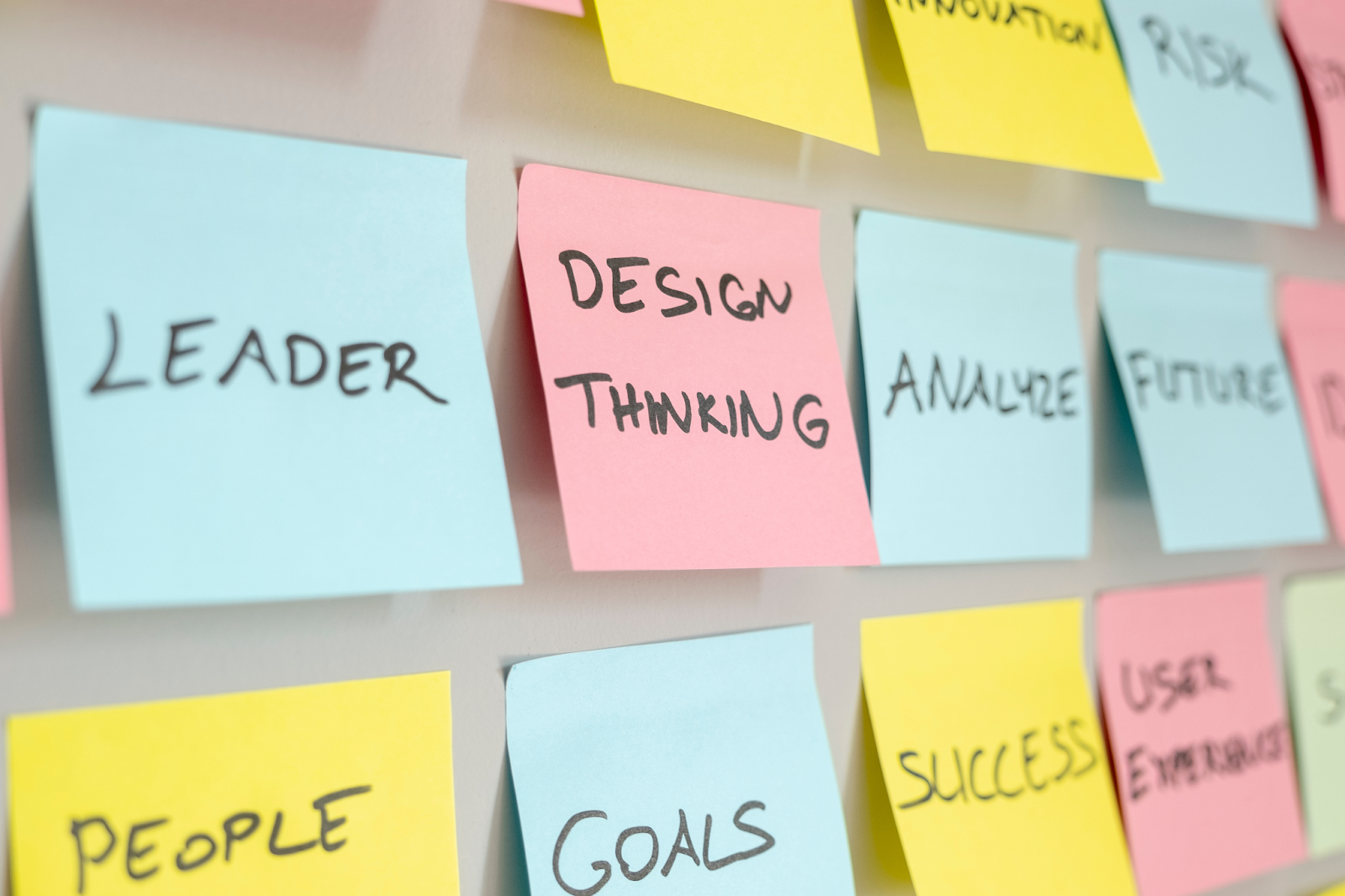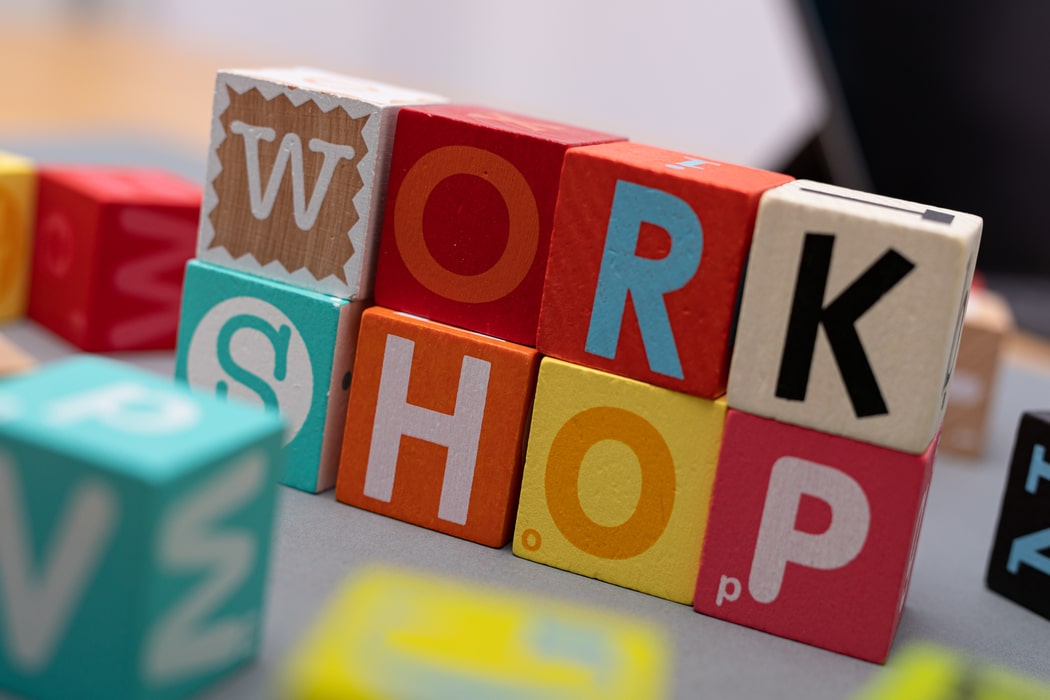In this blog, we will explore some of the common design thinking mistakes that can hinder the success of a workshop. We’ll also dive into actionable strategies to avoid design thinking workshop mistakes, ensuring that your sessions are productive, engaging, and truly effective.
Whether you're organizing your first design thinking workshop or looking to improve your current process, understanding these pitfalls will help you deliver better outcomes and avoid costly errors.
What is a Design Thinking Workshop?

A design thinking workshop is a collaborative, hands-on session where teams work together to address complex problems using a human-centered approach. The process involves five stages: empathy, define, ideate, prototype, and test. The goal is to deeply understand the users’ needs and pain points and then come up with innovative solutions that address those challenges.
In a design thinking workshop, participants are encouraged to think creatively, challenge assumptions, and iterate quickly. It’s a great way to foster innovation and solve problems, but when the workshop isn’t well-planned or facilitated, things can quickly go off track.
Common Mistakes in Design Thinking Workshops and How to Avoid Them
1. Skipping the Empathy Phase

One of the most common design thinking errors is rushing through the empathy phase. Many participants, especially those new to design thinking, are eager to jump straight into brainstorming solutions. They feel the need to be “productive” by immediately focusing on creating ideas, without fully understanding the problem from the user’s perspective.
Why It’s a Problem
Skipping or speeding through the empathy stage means solutions will be based on assumptions, not real user needs. If the team doesn’t invest enough time in understanding the user’s pain points, the solutions created during the ideation and prototyping phases might not address the actual problems.
How to Avoid This Mistake
Make sure the empathy research is thorough. Spend adequate time conducting user interviews, observations, and immersions. Don’t just gather surface-level insights; dig deeper into user experiences, motivations, and challenges. The more time and effort you put into this phase, the better the solutions will be later. Teamland's Design Thinking Workshops emphasize the importance of truly understanding users and gathering actionable insights that drive the rest of the process.
2. Failing to Define the Problem Clearly
Once teams start gathering insights, there’s often a rush to move on to ideation. However, failing to clearly define the problem at this stage can lead to misdirected efforts. If your team doesn’t take the time to articulate the problem properly, the solutions created might be irrelevant or ineffective.
Why It’s a Problem
If you don’t define the problem clearly, you risk solving the wrong issue. For instance, you might create a solution that fixes a symptom of the problem, rather than addressing its root cause. This leads to wasted resources and time, and ultimately results in a product or service that doesn’t meet users’ actual needs.
How to Avoid This Mistake
Once the empathy phase is complete, take time to articulate a clear problem statement. This statement should summarize the core challenge in a concise and user-centered way. It helps set the direction for the rest of the workshop. A well-defined problem ensures that everyone is aligned and focused on solving the same issue. Teamland guides how to frame these problem statements effectively in their workshops.
3. Not Involving All Participants in Ideation

In many workshops, the louder or more dominant participants tend to take over the ideation phase. In some cases, the facilitator might inadvertently favor certain voices, or perhaps the workshop participants aren’t encouraged to speak up. This limits the diversity of ideas and stifles creativity.
Why It’s a Problem
Limiting ideation to only a few people results in missed opportunities for innovation. Diverse ideas lead to more well-rounded solutions. When only a handful of voices dominate the process, some of the best ideas from quieter team members may never see the light of day.
How to Avoid This Mistake
Encourage equal participation from everyone in the workshop. Use techniques like silent brainstorming, where all participants write down their ideas first, or brainwriting, where ideas are shared on paper and passed around for others to build upon. This ensures that everyone’s voice is heard, leading to more creative and inclusive solutions.
At Teamland, our facilitators use techniques to ensure that everyone is equally involved in the ideation process.
4. Overcomplicating Prototypes
In the prototyping phase, it’s tempting to over-engineer the prototype, especially when teams are eager to see their ideas materialize. However, this can lead to unnecessary complexity, which slows down the process.
Why It’s a Problem
The goal of prototyping in design thinking is to create low-fidelity, quick mockups that can be tested, improved, and iterated upon. Overcomplicating prototypes results in wasted time and resources and can also hinder feedback. A prototype should be a tool for learning, not the final product.
How to Avoid This Mistake
Focus on creating low-fidelity prototypes that are quick and easy to test. These could be paper sketches, wireframes, or digital mockups that help visualize ideas without investing too much time or resources. The key is to test as early as possible, gather feedback, and iterate.
Teamland’s design thinking workshops stress the importance of rapid prototyping as a key aspect of successful design thinking.
5. Neglecting Iteration
Some teams treat the prototype as a finished product. Once they’ve created something, they assume it’s ready to be implemented, skipping the critical step of iterating based on feedback. This happens when teams are under time pressure or when they’re too attached to their initial ideas.
Why It’s a Problem
Iteration is at the heart of design thinking. Without it, you miss the opportunity to refine and improve the solution based on real user feedback. Prototypes that are not iterated upon can quickly become outdated or ineffective, making the design process less efficient.
How to Avoid This Mistake
Make sure that iteration is built into your process. After creating a prototype, conduct user testing, gather feedback, and improve the design based on those insights. Repeat this process several times to refine the solution. Teamland encourages iterative testing throughout the workshop to ensure that ideas are continuously improved.
6. Lack of Clear Focus on the User
In some workshops, teams become too focused on internal business goals or company constraints, which can result in losing sight of the primary user. This often happens when there's pressure to achieve business results quickly, and the team may try to design solutions that solve internal problems rather than addressing real user needs.
Why It’s a Problem
Design thinking is all about human-centered design. If the focus shifts too much toward business goals, the solutions can become misaligned with what users truly need. This leads to solutions that aren’t as effective or well-received by the end users, ultimately diminishing the workshop’s impact.
How to Avoid This Mistake
Keep the user at the center of every conversation. Constantly refer back to the user research and make sure solutions are developed with the user in mind. Use tools like user personas to help the team maintain empathy throughout the workshop.
At Teamland, we emphasize user-centered design by guiding teams through user research exercises and ensuring that each stage of the process is informed by user insights.
7. Overloading the Workshop with Too Many Activities
Design thinking workshops can sometimes become overwhelmed with too many activities or exercises. Facilitators might try to pack in too much in an attempt to cover everything. While this enthusiasm is well-intended, it can lead to workshop fatigue and a lack of focus.
Why It’s a Problem
Overloading the workshop can make it difficult for participants to focus on the most critical tasks, leading to superficial engagement and incomplete outcomes. Too many activities without clear prioritization can dilute the effectiveness of the workshop.
How to Avoid This Mistake
Focus on the most important activities that will drive real insights and results. Ensure that each activity is aligned with the overall goal of the workshop and that there’s enough time to fully engage with each step.
At Teamland, we ensure our workshops are structured to deliver key insights without overwhelming participants, providing a clear path from empathy research to solution prototyping.
8. Inadequate Testing and Validation of Prototypes
Sometimes, teams become attached to their prototypes too quickly, and testing is overlooked or rushed. There’s often a desire to move on to the next step, or the team might be hesitant to accept feedback that could potentially change their ideas.
Why It’s a Problem
Skipping or rushing the testing phase means you’re missing out on valuable feedback from users. Without testing, you can’t ensure that your prototype addresses the user’s needs or that it works in the real world.
How to Avoid This Mistake
Ensure that testing is an integral part of the design thinking process. Use low-fidelity prototypes to quickly test ideas with users and iterate based on their feedback. Testing doesn’t have to be perfect—it just needs to be frequent and iterative.
9. Lack of Diverse Perspectives
Design thinking is about creativity, and many teams fall into the trap of relying on the same voices during ideation and problem-solving. If your team doesn’t include diverse perspectives, whether it’s different skill sets, backgrounds, or experiences, you risk limiting the creative potential of the workshop.
Why It’s a Problem
A lack of diversity can lead to narrow ideas that don’t fully address the needs of the user. Design thinking thrives on a diverse range of ideas and solutions, which helps uncover unique insights and perspectives that you might otherwise miss.
How to Avoid This Mistake
Encourage diverse participation in your workshop. Include people from different departments, backgrounds, and skill sets. When diverse minds come together, the result is a more well-rounded and creative approach to problem-solving.
Teamland also offers Custom Workshop Designs encourage cross-functional collaboration to generate a wide variety of ideas and insights.
10. Ignoring the Importance of Culture and Team Dynamics
It’s easy to focus on the process of design thinking itself—empathy, ideation, prototyping—without paying attention to the dynamics within the team. Often, team members may be hesitant to speak up, especially in hierarchical environments, or they may feel uncomfortable sharing ideas in front of others.
Why It’s a Problem
When the team dynamic isn’t positive, the collaboration needed for design thinking can be stifled. Ideas won’t flow freely, and the workshop may not foster the creativity and innovation needed for breakthrough solutions.
How to Avoid This Mistake
Create a safe, open environment where all participants feel comfortable sharing ideas. Encourage active listening, and make sure all voices are heard, especially those of quieter participants. This creates a culture of trust that allows creativity to thrive. At Teamland, we focus on building trust and collaboration in our workshops, ensuring that participants feel confident in contributing to the process.
11. Failing to Connect the Workshop Back to Business Objectives
At times, workshops become isolated from the business objectives and can turn into theoretical exercises. Teams may focus too much on ideation and prototyping without considering how the results align with the company’s broader business goals.
Why It’s a Problem
Without connecting the design thinking process to the organization’s business objectives, the solutions might be innovative but not practically applicable. This leads to great ideas that never see the light of day because they don’t align with the company’s priorities.
How to Avoid This Mistake
Throughout the workshop, continually refer back to business goals and ensure that your solutions are in alignment with these objectives. Keep the end goal in mind—solutions should not only solve the user's problem but also contribute to business success.
Teamland ensures that teams always tie their ideas back to real business challenges, ensuring that the outcomes are actionable and aligned with company priorities.
12. Lack of Post-Workshop Support
After a workshop, teams sometimes fail to provide the necessary support to implement ideas. Without clear follow-up or action plans, the momentum created during the workshop fades, and solutions may not be fully realized.
Why It’s a Problem
Without continued support, great ideas can fall by the wayside. Teams may return to their regular work routine and forget about the insights and solutions developed during the workshop. This can lead to frustration and missed opportunities.
How to Avoid This Mistake
After the workshop, create a clear roadmap for next steps. Ensure that there’s a plan for implementing ideas, and assign accountability for taking action. Teamland offers post-workshop support, ensuring that teams don’t just leave with ideas but also with a clear path forward for bringing them to life.
Final Thoughts
Design thinking workshops are an invaluable tool for solving complex problems in a creative and user-centered way. However, common design thinking mistakes, such as skipping critical phases or failing to align solutions with business objectives, can hinder the effectiveness of these workshops. By addressing these pitfalls and following best practices, your team can maximize the impact of your design thinking workshops.
At Teamland, we are committed to helping organizations avoid these common mistakes through expertly facilitated design thinking workshops that emphasize collaboration, iteration, and user-centered solutions. We ensure that your team is equipped to generate innovative ideas, prototype effectively, and implement solutions that truly meet the needs of your users and business.
Plan your experience with Teamland today!
FAQs
1. Why do some design thinking workshops fail?
Design thinking workshops often fail due to a lack of thorough preparation and failure to follow the process correctly. One common issue is skipping the empathy phase, where teams fail to truly understand user needs, which leads to solutions based on assumptions rather than real insights. Another reason is poor facilitation, where dominant voices overshadow quieter participants, limiting creativity. Additionally, teams may rush through stages like ideation and prototyping without testing ideas or iterating based on feedback. These missteps result in ineffective solutions that don’t meet user needs or business goals.
2. What should be avoided in a design thinking process?
In the design thinking process, the most important things to avoid include skipping the empathy phase, which leads to misunderstanding user needs, and overcomplicating prototypes, which wastes time and resources. Focusing too much on internal business goals rather than the user’s needs can also lead to ineffective solutions. Additionally, skipping iterations or testing can result in solutions that are not properly validated. Lastly, a lack of diverse perspectives during ideation can limit the creativity of the workshop and result in one-dimensional solutions.
3. Why is user research important in design thinking?
User research is critical because it ensures that the solutions created are grounded in real user needs and not assumptions. Without user research, teams risk designing solutions that don’t address the actual problems users face. Design thinking emphasizes empathy, which is only possible when teams engage with users directly. Conducting interviews, surveys, and observing users provides invaluable insights that shape the problem definition, ideation, and prototyping phases. Ultimately, user research ensures that the solutions developed are relevant and effective.
4. How can you avoid failure in a design thinking session?
To avoid failure in a design thinking session, it’s essential to focus on user needs from the start. Make sure the problem is clearly defined, so the team is aligned on what they are trying to solve. Engage all participants equally in the ideation process to ensure a wide variety of perspectives. Test ideas early with low-fidelity prototypes, gather user feedback, and iterate continuously. Having clear goals for the session and staying focused on user-centered design will prevent the workshop from veering off course.
5. What are the signs of a poorly planned design thinking workshop?
A poorly planned design thinking workshop often lacks clear objectives, making it difficult for participants to stay focused and aligned. An over-packed agenda can overwhelm participants, preventing them from diving deep into the most critical issues. Poor facilitation may cause key insights to be overlooked or lead to ineffective group dynamics. If the workshop doesn't prioritize empathy or user research, the resulting solutions may not address user needs. Limited participation from some team members can lead to one-sided solutions, and if there’s no follow-up plan, good ideas may never be implemented.







